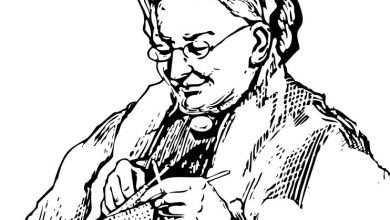
The Handsomest Drowned Man in the World by Gabriel Garcia Marquez is a short story about how the existence of a certain drowned man changes an entire village and the community. Through this story, the author navigates the maze of magic realism and the transformative power of a single person within a community. As is with his other stories, through this story, Gabriel Garcia Marquez explores the connection between the power of collective imagination and the physical, tangible reality.
The Handsomest Drowned Man in the World | Summary
The story begins with a mysterious and gloomy atmosphere when the children notice something coming out of the ocean. Instead of a monster or a big fish, it turns out to be the body of a drowned man, that is covered in so much mud and plantation that aside from its shape, it is not recognizable as a person. The children play around with this body, burying and unburying it continuously. The men notice this and, recognizing a body, take it to a nearby house for inspection. While the men go around to the other villages to find out whose man is this, the women who are left behind to take care of the body start unearthing the true form of the man beneath all the muck. The man is bigger, taller, and more muscular than any of the men they’ve seen. He appears to have a superior physique. The man is such a great specimen that he leaves “no room for him in [their] imagination”.
The women immediately build for him a life, where he is generous, kind, and powerful. That he commands the seas and calls the fish from the sea. He is able to make flowers grow even on the cliffs. The women gaze and gaze upon his visage and they claim that their men are nothing in front of this god-like man. For him, the houses would have higher beams, wider doors, bigger beds and sturdier furniture, and his wife would be the happiest woman on earth. However, as they continue to gaze upon him, they realize that this man must have lived a pitiful and humble life. They start bewailing his situation, for he must have had difficulties in his life in their village. Their houses were small, chairs not sturdy enough, doors shorter. They conjure up a pitiable image for him, since they start believing him to be of their village.
When they find out no one knows of this man, they claim him as one of their own. They decide to hold a grand funeral for such a grand man. The men ask why they are holding such a fine funeral for such a nondescript man, they show him his face and then they realize this is a man who requires a worthy funeral. The women name him Esteban, and make his funeral a big event. They decide to change and adapt their village to fit Esteban’s features, so that he may return anytime and find peace. They don’t tie him with too much weight so that he may float whenever he wants into the village. They dream of being called “Esteban’s Village”.
The Handsomest Drowned Man in the World | Analysis
Gabriel Garcia Marquez employs magic realism to explore the concept of how myths are created within a community. The story is set in an unknown village, to make it a universal structural framework, however, the roots of the author’s own heritage are visible in how the community functions and the roles assigned to different members of the society. The village is a small tight-knit population where everyone knows each other and they keep count of who is there or not. And so, when the strange, drowned man appears in the village, there is a ceremonious chaos happening. And towards the end, when the people of the village adopt him as their own, they mourn the loss of a member of their community. Where they were a counted, closed village, they were now forever one member short. The readers are taken through a narration of the creation of a legend, while simultaneously being involved in the process.
The drowned man is not a known person. No one knows his origins or the way he was when he was alive. But at the mere sight of his visage and his body, they build a life for him. The reader is taken through a narrative journey of this man gaining a new life. The themes of mythology and a story-within-a-story structure create an atmosphere of magic in the minds of the reader.
Myths often revolved around a central heroic figure who’d save the day with his superhuman qualities. However, Marquez breaks away from this category of myth and instead frames it through the perspective of the people myths have an effect upon. Esteban, the hero of this story, is, in a twist of mythical creation, dead. Even though Esteban is dead, he commands emotions from within the villagers, allowing them to explore the idea of heroism themselves. Through their pity, sympathy, and compassion for this drowned man who couldn’t pursue a better and more convenient life while alive, they vowed to grant him peace and comfort in death. The villagers, inspired by Esteban, vow to develop their village so as to properly fit the memory of Esteban, with bigger houses, taller doors, and sturdier chairs and they promise to grow flowers on the cliffs so that the passing captains of the ships would smell the fragrance in the air and point out “Esteban’s Village”. This legacy that they create of Esteban is etched into the minds of the villagers and the time before Esteban was present in the village is erased. This creation of a myth is a magical process that brings about a hurricane of change.
This story is a classic example of Marquez’s brand of magic realism. In a world where magic is real, the residents are open to unusual happenings and develop a new set of mutually held beliefs as a result. This gives the events of the day a different kind of background to play out against. Magical realism broadens people’s perspectives of reality by fusing elements of the strange and magical, the legendary, the imaginative, and the sacred.
The mere act of acceptance and giving honor to the dead changes a community for the better. The magic lies not in the way that is tangible or visible; the magic is woven through a tapestry of community-building and the imagination of the people. Through their imaginative power, the drowned man whom nobody knows about transforms into Esteban, the honored member of his village. Esteban is granted a life where, before washing up to the shore, he had none, at least, none that the reader knew about. This act of accepting a dead man into their home is foreshadowed by the children playing with his body and considering him a plaything. They bury and dig him up repeatedly, signifying the magical transformation and resurrection he undergoes later in the story. The village uplifts his status as a dead, drowned man to a member of the village, where he had a life. Life is breathed into a dead body through the conception of a myth and a story. The power of imagination rescues a magnificent man and effectuates a chain-reaction of growth and development in the village. Although Esteban may have been a different person altogether, or he may be a nondescript dead body in the ocean now, he lives on within the minds of the villagers, through their collective memories and imagination.


